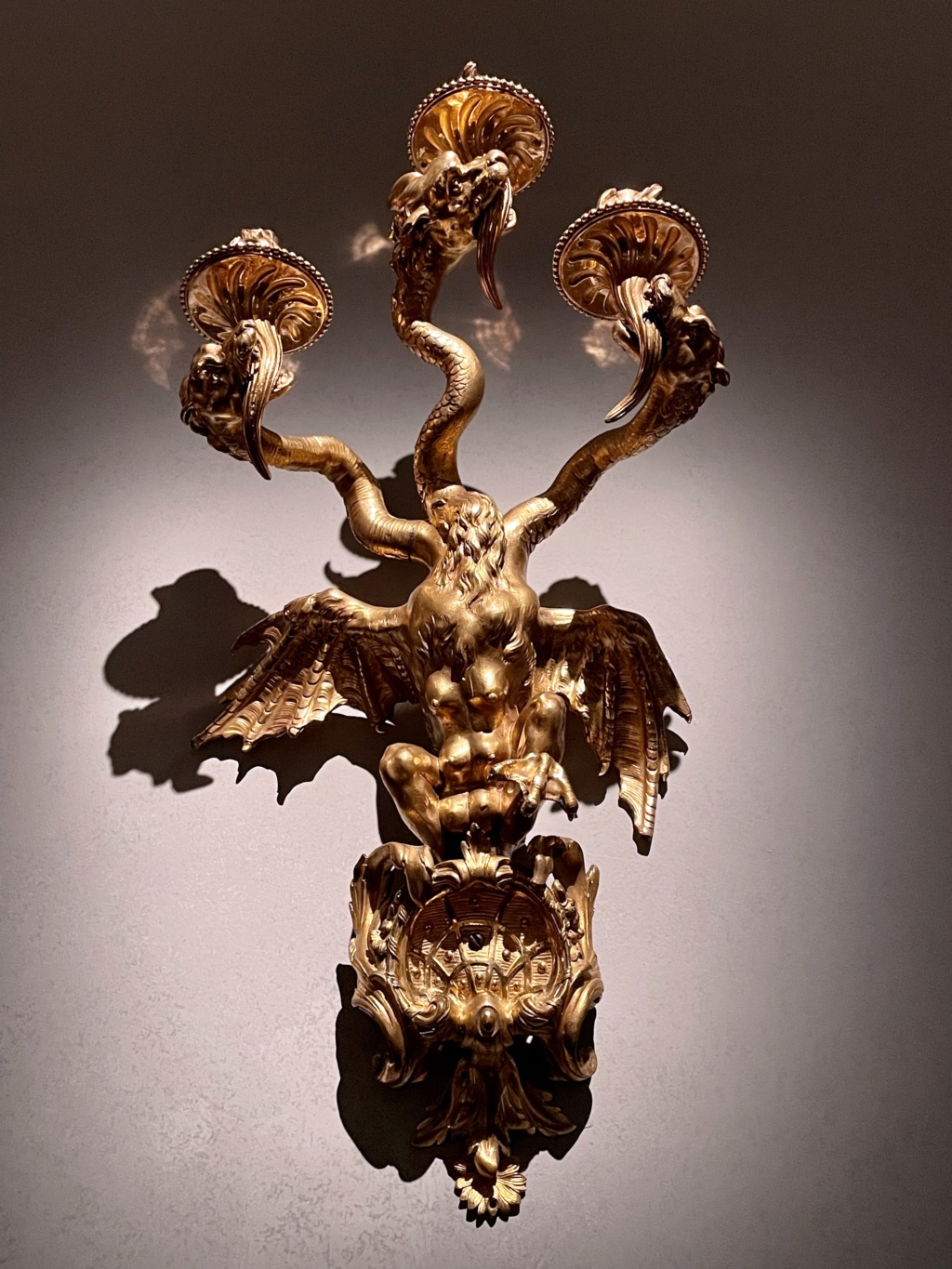Chinoiseries du XVIIIe siècle (arts décoratifs)
+3
Comtesse Diane
Mme de Sabran
La nuit, la neige
7 participants
LE FORUM DE MARIE-ANTOINETTE :: La France et le Monde au XVIIIe siècle :: Les Arts et l'artisanat au XVIIIe siècle :: Les arts décoratifs
Page 3 sur 3
Page 3 sur 3 •  1, 2, 3
1, 2, 3
 Re: Chinoiseries du XVIIIe siècle (arts décoratifs)
Re: Chinoiseries du XVIIIe siècle (arts décoratifs)
Merci beaucoup Gouv' ! 
J'aime beaucoup les minuscules consoles d'applique murales qui entourent le miroir, et agrémentées de petites figurines en porcelaine.
Et j'ai toujours une pensée pour celles ou ceux qui devaient dépoussiérer tout ça...sans rien casser !

J'aime beaucoup les minuscules consoles d'applique murales qui entourent le miroir, et agrémentées de petites figurines en porcelaine.
Et j'ai toujours une pensée pour celles ou ceux qui devaient dépoussiérer tout ça...sans rien casser !


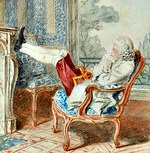
La nuit, la neige- Messages : 18064
Date d'inscription : 21/12/2013
 Re: Chinoiseries du XVIIIe siècle (arts décoratifs)
Re: Chinoiseries du XVIIIe siècle (arts décoratifs)
Un autre château mais sur le thème de l'inde à Brighton UK est également fort beau et étrange. C'était une autre mode au 19ème. Petite question on parle de chinoiserie, mais l'art japonais a t'il été à la mode ?
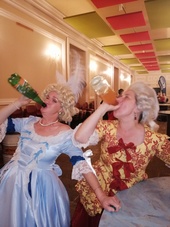
Mr ventier- Messages : 1126
Date d'inscription : 18/11/2020
Age : 58
Localisation : Rouen normandie
 Re: Chinoiseries du XVIIIe siècle (arts décoratifs)
Re: Chinoiseries du XVIIIe siècle (arts décoratifs)
Il fut très à la mode dans les années 1900. Mais aux XVIIe et XVIIIe siècle on ne faisait pas la différence entre les objets et modèles qui passaient tous par les mêmes ports. Donc des porcelaines japonaises comme les Imari étaient considéré comme 'chinoises'.

Lucius- Messages : 11656
Date d'inscription : 21/12/2013
Age : 32
 Re: Chinoiseries du XVIIIe siècle (arts décoratifs)
Re: Chinoiseries du XVIIIe siècle (arts décoratifs)
Si les japonais avaient su..... Lol

Mr ventier- Messages : 1126
Date d'inscription : 18/11/2020
Age : 58
Localisation : Rouen normandie
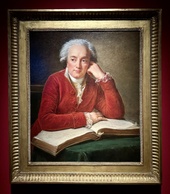
Gouverneur Morris- Messages : 11708
Date d'inscription : 21/12/2013
 Re: Chinoiseries du XVIIIe siècle (arts décoratifs)
Re: Chinoiseries du XVIIIe siècle (arts décoratifs)
Très endommagé hélas. L'absence des tentures rend curieuse cette scansion de pilastres laissés dans le vide.

Lucius- Messages : 11656
Date d'inscription : 21/12/2013
Age : 32
 Re: Chinoiseries du XVIIIe siècle (arts décoratifs)
Re: Chinoiseries du XVIIIe siècle (arts décoratifs)
Tu es à Rome, petit veinard de Momo ?! 
Chic, chic !!! ... à nous tes si beaux reportages !!!
Comme mon petit Lulu, je trouve ces chinoiseries bien délabrées . Ce devait être magnifique pourtant !
Une restauration est-elle prévue ?

Chic, chic !!! ... à nous tes si beaux reportages !!!
Comme mon petit Lulu, je trouve ces chinoiseries bien délabrées . Ce devait être magnifique pourtant !
Une restauration est-elle prévue ?

_________________
... demain est un autre jour .
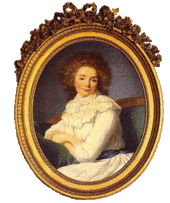
Mme de Sabran- Messages : 55316
Date d'inscription : 21/12/2013
Localisation : l'Ouest sauvage
 Re: Chinoiseries du XVIIIe siècle (arts décoratifs)
Re: Chinoiseries du XVIIIe siècle (arts décoratifs)
This month, in honour of the Chinese New Year, the Wallace Collection focuses on the lure of China in the eighteenth-century French imagination.
By 1700 the scale of the Dutch and British East India Companies’ imports had brought Chinese lacquer and porcelain to an ever-growing consumer base and, unable to produce either domestically, European craftsmen increasingly looked to provide substitutes. On this casket, the cabinetmaker has used glossy, dark turtle shell, inlaid with brass marquetry, to mimic the effect of lacquer.
The marquetry is enlivened with decoration taken from print sources, including one of the most celebrated travelogues of its time, Johan Nieuhof’s illustrated description of the Dutch East India Company embassy to China, published in Dutch in 1665 and widely translated.
Although working in Paris by the 1690s, Bernard van Risen Burgh, to whom this box is attributed, came from Holland and must have known Nieuhof’s book. Aspects of the casket also show that he was familiar with Stalker and Parker’s 1688 ‘Treatise on Japanning’, a book intended specifically for those attempting to produce imitation lacquer.

By 1700 the scale of the Dutch and British East India Companies’ imports had brought Chinese lacquer and porcelain to an ever-growing consumer base and, unable to produce either domestically, European craftsmen increasingly looked to provide substitutes. On this casket, the cabinetmaker has used glossy, dark turtle shell, inlaid with brass marquetry, to mimic the effect of lacquer.
The marquetry is enlivened with decoration taken from print sources, including one of the most celebrated travelogues of its time, Johan Nieuhof’s illustrated description of the Dutch East India Company embassy to China, published in Dutch in 1665 and widely translated.
Although working in Paris by the 1690s, Bernard van Risen Burgh, to whom this box is attributed, came from Holland and must have known Nieuhof’s book. Aspects of the casket also show that he was familiar with Stalker and Parker’s 1688 ‘Treatise on Japanning’, a book intended specifically for those attempting to produce imitation lacquer.


Gouverneur Morris- Messages : 11708
Date d'inscription : 21/12/2013

Gouverneur Morris- Messages : 11708
Date d'inscription : 21/12/2013

Gouverneur Morris- Messages : 11708
Date d'inscription : 21/12/2013
 Re: Chinoiseries du XVIIIe siècle (arts décoratifs)
Re: Chinoiseries du XVIIIe siècle (arts décoratifs)
J'aime ! 
Tes photos sont remarquables comme toujours, merci, mon cher Momo .

Tes photos sont remarquables comme toujours, merci, mon cher Momo .
_________________
... demain est un autre jour .

Mme de Sabran- Messages : 55316
Date d'inscription : 21/12/2013
Localisation : l'Ouest sauvage

Gouverneur Morris- Messages : 11708
Date d'inscription : 21/12/2013
 Re: Chinoiseries du XVIIIe siècle (arts décoratifs)
Re: Chinoiseries du XVIIIe siècle (arts décoratifs)
Merci beaucoup pour ces images et cette sélection d'objets ! 
Les bras de lumière me plaisent beaucoup ! Ils sortent de " l'ordinaire ", n'est-ce pas...
Notre ami et grand reporter du Forum a donc visité l'exposition que nous présentons, ici :

 Hôtel de la Marine, Al Thani Collection Foundation : Gulbenkian par lui-même, dans l’intimité d’un collectionneur
Hôtel de la Marine, Al Thani Collection Foundation : Gulbenkian par lui-même, dans l’intimité d’un collectionneur

Les bras de lumière me plaisent beaucoup ! Ils sortent de " l'ordinaire ", n'est-ce pas...

Notre ami et grand reporter du Forum a donc visité l'exposition que nous présentons, ici :


La nuit, la neige- Messages : 18064
Date d'inscription : 21/12/2013

Gouverneur Morris- Messages : 11708
Date d'inscription : 21/12/2013
 Re: Chinoiseries du XVIIIe siècle (arts décoratifs)
Re: Chinoiseries du XVIIIe siècle (arts décoratifs)
Ravissant ! Merci pour ces images... 

La nuit, la neige- Messages : 18064
Date d'inscription : 21/12/2013
 Re: Chinoiseries du XVIIIe siècle (arts décoratifs)
Re: Chinoiseries du XVIIIe siècle (arts décoratifs)
Dans ce genre : la perfection ! 
Sera prochainement proposée en vente aux enchères cette...
Pair of Louis XVI Ormolu and Blued-Steel Chenets 'aux Chinois'
Supplied by François Rémond to Dominique Daguerre in 1787, after a design by Jean-Jacques Lequeu
One with a seated Chinese man and the other a Chinese woman wearing straw hats perched on a pagoda roof with tessellated tiles, each flanked by sea creatures, above a pierced blind-fret frieze hung with bells on turned tapering feet, with their original fire-irons mounted with further pagoda roofs
12 in. (30 cm.) high; 12 in. (30 cm.) wide; 26 in. (66 cm.) deep

Lot Essay
These remarkable chenets ‘aux Chinois’ with exquisite chasing are recorded in an invoice of 1787 from the ciseleur-doreur François Rémond (d. 1812) to the marchand-mercier Dominique Daguerre (d. 1796). They were almost certainly commissioned for a Chinese pavilion, such as the one constructed for Marie Antoinette built c.1783 in the gardens of her beloved Petit Trianon or the pavilion designed for Henri-Leonard Bertin by Jean-Jacques Lequeu.


Elements in the design of the present lot, such as the strapwork hung with bells, dragons flanking the seated Chinese figures, trellis and tiled roofs directly relate to architectural plans produced by Lequeu, now housed in the Bibliothèque nationale de France. François Rémond in the same year (1787) delivered an important group of gilt-bronze objects in the Chinoiserie style to the Prince Regent, now in the Royal Collection.



The invoice relating to the production of these chenets by François Rémond for Dominique Daguerre describes them thus ‘Pour monture de deux magots chinois, sur coussins élevés de douze quilles sur un croisillon doré d’or mat’. As such they belong to a corpus of works ‘à la chinoise’ commissioned by Daguerre and executed by Rémond in the 1780s that saw the enduring fascination in the arts and culture of the Orient adapted to the prevailing neoclassical tastes of the French elite. These objects were part of a broader trend in the decorative arts, architecture and garden design that saw a number of gardens, jeux de bague, pavilions and galleries constructed in the Chinese taste.

Vue du jeu de bague et de sa galerie au Petit Trianon
Claude-Louis Châtelet
Aquarelle sur papier vergé, 1786
Image : Château de Versailles, Dist. RMN / Christophe Fouin
Designed in a fantastical architectural style, these chenets were almost certainly produced for use in a pavillon Chinois and elements of the design correspond directly to designs for Chinoiserie pavilions and jeux de bague by the designer Jean-Jacques Lequeu. A design for a Chinese pagoda by Lequeu shows a figure wearing the same garb and headwear as the figures on the present lot, reposing on a tessellated tile roof of similar design to the roof modelled on the chenets. The same design depicts dragon-like creatures on the roofs of the pagoda above a pierced frieze hung with bells that is closely related to the pierced frieze with bells on the present lot. Another design by Lequeu for the jeu de bague chinois in the jardin chinois of the duc de Chartres at Monceau shows a pagoda with an even more closely related pierced latticework frieze hung with bells.


The marchand-mercier Dominique Daguerre (c.1740-1796) was an inventor and dealer of luxurious furniture and ormolu-mounted objects, who supplied works of art to Louis XVI and Marie-Antoinette, their courtiers and members of the wider Royal family. Documented commissions also came from England for the Prince-Regent, later George IV, whose predilection for Chinese and Chinoiserie works of art first found expression in the magnificent Chinese drawing room at Carlton House, later to reach its zenith in the construction of the Marine Pavilion at Brighton.




Daguerre, with the architect Henry Holland (1745-1806), was in charge of work at Carlton House for the Prince Regent, and especially the Chinese Drawing Room. Iconography similar to that on the present chenets including bells, dragons and fretwork can be seen on a number of pieces supplied by Daguerre to the Prince Regent currently in the British Royal Collection. This includes a pair of ormolu-mounted black-ground Sèvres vases decorated with chinoiseries in gold and platinum (RCIN 2347), a pair of ormolu-mounted ebony console tables by Adam Weisweiler (RCIN 13) and a candelabra (RCIN 4246) and a clock (RCIN 2868).

An ormolu-mounted Japanese lacquer inkstand supplied to Marie-Antoinette for the château de Versailles and currently preserved in the musée du Louvre (inv. MR 380-76) also displays related characteristics including Chinese figures, a fretwork frieze and hanging bells.

Ecritoire en laque des collections de Marie-Antoinette
François Rémond
Vers 1785
Image : Grand Palais Rmn (musée du Louvre) / Martine Beck-Coppola

* Source et informations complémentaires : Christie's - Londres, vente du 2 juillet 2024

Sera prochainement proposée en vente aux enchères cette...
Pair of Louis XVI Ormolu and Blued-Steel Chenets 'aux Chinois'
Supplied by François Rémond to Dominique Daguerre in 1787, after a design by Jean-Jacques Lequeu
One with a seated Chinese man and the other a Chinese woman wearing straw hats perched on a pagoda roof with tessellated tiles, each flanked by sea creatures, above a pierced blind-fret frieze hung with bells on turned tapering feet, with their original fire-irons mounted with further pagoda roofs
12 in. (30 cm.) high; 12 in. (30 cm.) wide; 26 in. (66 cm.) deep

Lot Essay
These remarkable chenets ‘aux Chinois’ with exquisite chasing are recorded in an invoice of 1787 from the ciseleur-doreur François Rémond (d. 1812) to the marchand-mercier Dominique Daguerre (d. 1796). They were almost certainly commissioned for a Chinese pavilion, such as the one constructed for Marie Antoinette built c.1783 in the gardens of her beloved Petit Trianon or the pavilion designed for Henri-Leonard Bertin by Jean-Jacques Lequeu.


Elements in the design of the present lot, such as the strapwork hung with bells, dragons flanking the seated Chinese figures, trellis and tiled roofs directly relate to architectural plans produced by Lequeu, now housed in the Bibliothèque nationale de France. François Rémond in the same year (1787) delivered an important group of gilt-bronze objects in the Chinoiserie style to the Prince Regent, now in the Royal Collection.



The invoice relating to the production of these chenets by François Rémond for Dominique Daguerre describes them thus ‘Pour monture de deux magots chinois, sur coussins élevés de douze quilles sur un croisillon doré d’or mat’. As such they belong to a corpus of works ‘à la chinoise’ commissioned by Daguerre and executed by Rémond in the 1780s that saw the enduring fascination in the arts and culture of the Orient adapted to the prevailing neoclassical tastes of the French elite. These objects were part of a broader trend in the decorative arts, architecture and garden design that saw a number of gardens, jeux de bague, pavilions and galleries constructed in the Chinese taste.

Vue du jeu de bague et de sa galerie au Petit Trianon
Claude-Louis Châtelet
Aquarelle sur papier vergé, 1786
Image : Château de Versailles, Dist. RMN / Christophe Fouin
Designed in a fantastical architectural style, these chenets were almost certainly produced for use in a pavillon Chinois and elements of the design correspond directly to designs for Chinoiserie pavilions and jeux de bague by the designer Jean-Jacques Lequeu. A design for a Chinese pagoda by Lequeu shows a figure wearing the same garb and headwear as the figures on the present lot, reposing on a tessellated tile roof of similar design to the roof modelled on the chenets. The same design depicts dragon-like creatures on the roofs of the pagoda above a pierced frieze hung with bells that is closely related to the pierced frieze with bells on the present lot. Another design by Lequeu for the jeu de bague chinois in the jardin chinois of the duc de Chartres at Monceau shows a pagoda with an even more closely related pierced latticework frieze hung with bells.


The marchand-mercier Dominique Daguerre (c.1740-1796) was an inventor and dealer of luxurious furniture and ormolu-mounted objects, who supplied works of art to Louis XVI and Marie-Antoinette, their courtiers and members of the wider Royal family. Documented commissions also came from England for the Prince-Regent, later George IV, whose predilection for Chinese and Chinoiserie works of art first found expression in the magnificent Chinese drawing room at Carlton House, later to reach its zenith in the construction of the Marine Pavilion at Brighton.




Daguerre, with the architect Henry Holland (1745-1806), was in charge of work at Carlton House for the Prince Regent, and especially the Chinese Drawing Room. Iconography similar to that on the present chenets including bells, dragons and fretwork can be seen on a number of pieces supplied by Daguerre to the Prince Regent currently in the British Royal Collection. This includes a pair of ormolu-mounted black-ground Sèvres vases decorated with chinoiseries in gold and platinum (RCIN 2347), a pair of ormolu-mounted ebony console tables by Adam Weisweiler (RCIN 13) and a candelabra (RCIN 4246) and a clock (RCIN 2868).

An ormolu-mounted Japanese lacquer inkstand supplied to Marie-Antoinette for the château de Versailles and currently preserved in the musée du Louvre (inv. MR 380-76) also displays related characteristics including Chinese figures, a fretwork frieze and hanging bells.

Ecritoire en laque des collections de Marie-Antoinette
François Rémond
Vers 1785
Image : Grand Palais Rmn (musée du Louvre) / Martine Beck-Coppola

* Source et informations complémentaires : Christie's - Londres, vente du 2 juillet 2024

La nuit, la neige- Messages : 18064
Date d'inscription : 21/12/2013
Page 3 sur 3 •  1, 2, 3
1, 2, 3
 Sujets similaires
Sujets similaires» Marie-Antoinette et le goût de l'Egypte, arts décoratifs du XVIIIe siècle
» Aux Arts décoratifs, "3 siècle de mode"
» Alimentation, gastronomie, arts de la table au XVIIIe siècle
» Le Musée des Arts décoratifs à Paris
» Musée des arts décoratifs de La Havane (Cuba)
» Aux Arts décoratifs, "3 siècle de mode"
» Alimentation, gastronomie, arts de la table au XVIIIe siècle
» Le Musée des Arts décoratifs à Paris
» Musée des arts décoratifs de La Havane (Cuba)
LE FORUM DE MARIE-ANTOINETTE :: La France et le Monde au XVIIIe siècle :: Les Arts et l'artisanat au XVIIIe siècle :: Les arts décoratifs
Page 3 sur 3
Permission de ce forum:
Vous ne pouvez pas répondre aux sujets dans ce forum|
|
|























 , exposés à la Marine et provenant de la Gulbenkian :
, exposés à la Marine et provenant de la Gulbenkian :
